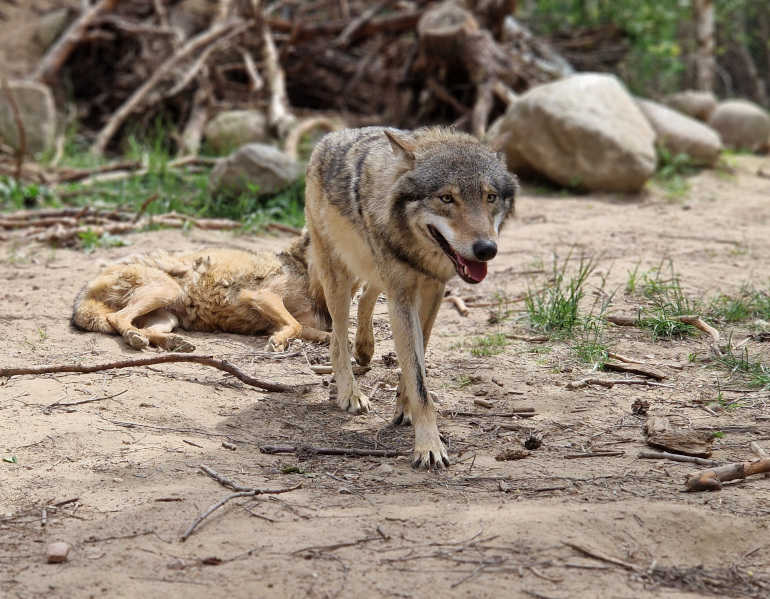Factors Shaping the Exposure of Large Predators to Health Threats in the Urbanization Gradient

30 07 2025
Dr hab. Sabina Pierużek-Nowak, University Professor, has received funding in the Opus 28 competition organized by the National Science Centre for the implementation of the project entitled “Factors shaping the exposure of large carnivores to health threats along an urbanization gradient.” The project is led by the University of Warsaw, with the Catholic University of Lublin as a partner. The researchers will investigate how urban expansion affects wolves and lynxes.
Human activity has significantly altered ecosystems, leading to decreased biodiversity and threatening numerous populations of wild animals. This disruption increases mortality rates and reduces reproductive success for these species. Moreover, humans have introduced various new threats to the survival of wildlife, such as chemical pollution and increased disease risks. To determine the conservation needs of wild species, it is essential to understand how diverse human activities impact them and how changes in landscapes affect wildlife health.
Environmental transformations can modify interactions between hosts and parasites, contributing to the rise of infectious diseases in wild animals. Understanding how these human-created environments influence disease incidence is crucial. Increased interactions between humans, livestock, and wildlife, caused by landscape fragmentation, may lead to disease transmission from domestic animals to wild species. This movement of pathogens can also result in “pathogen pollution”, whereby different diseases among wild animals spread among both domestic and foreign species.
Wild animals are attracted to human settlements by the presence of many human-generated resources, such as food, shelter, and breeding sites. The abundance of anthropogenic food sources, such as carrion, waste, injured game, and remains of hunted animals, can modify the foraging behavior of wild predators, even in the presence of ample natural prey. However, this food is often of low quality and may contain harmful substances like antibiotics, chemicals, heavy metals, and metalloids. Close interactions with humans can also stress wild animals, and stress may alter the gut microbiome of these animals, potentially impacting their health and making them more susceptible to diseases.
Due to the bioaccumulation of toxic substances, predators are particularly vulnerable to chemical pollutants and diseases. This susceptibility makes them effective indicators for early warnings of changes in ecosystems. In Europe, populations of large predators are increasing. These animals, once confined to extensive forested areas, are now frequently seen in highly fragmented landscapes. This leads to more interactions with domestic animals, increased reliance on human food sources, and greater exposure to chemical pollutants and diseases.
In this project, I will investigate how urbanization, landscape fragmentation, and increased interactions with livestock, dogs, and cats, along with human-induced chemical pollution, affect the health of two charismatic large predators—the wolf (Canis lupus) and the Eurasian lynx (Lynx lynx) in Central Europe. Data on these key species may assist environmental protection agencies and veterinary services in making more informed decisions regarding nature conservation and disease prevention.